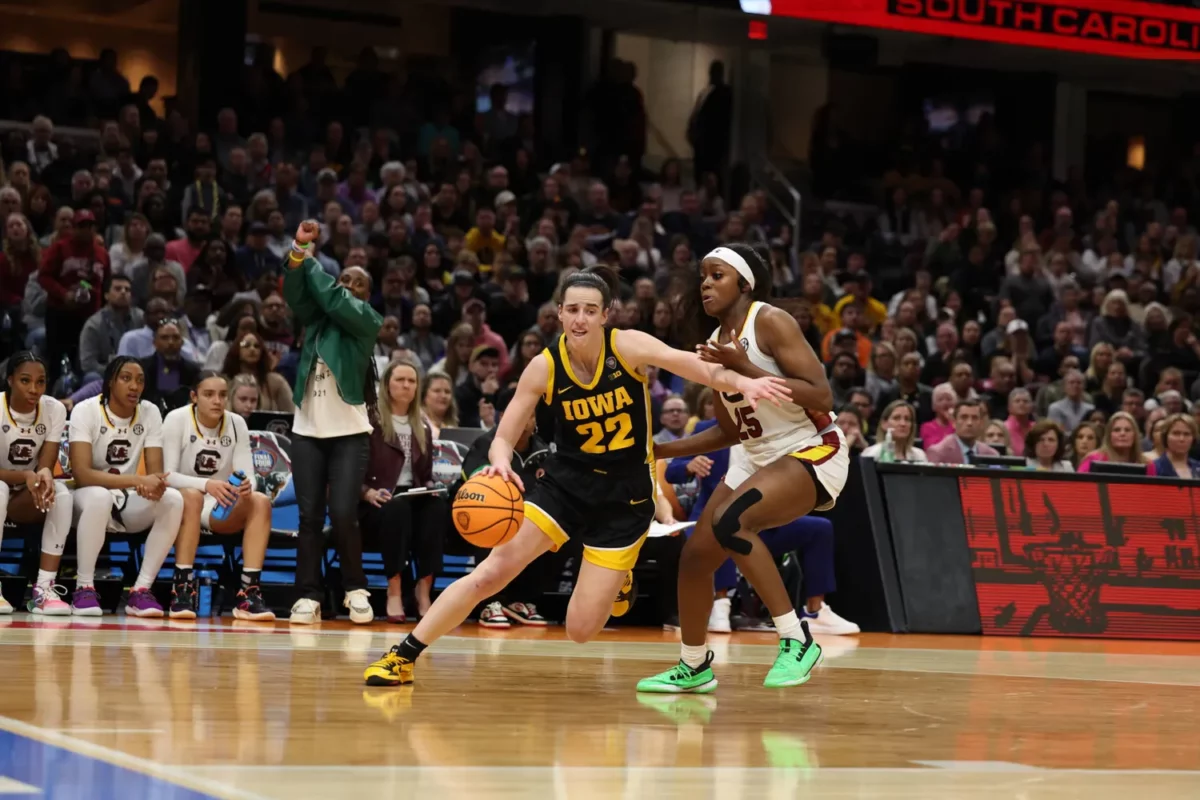
People’s interest in women’s sports has soared — and it’s only predicted to keep rising.
The NCAA’s Final Four tournament has set record numbers in viewership. Friday’s game between the Iowa Hawkeyes and the University of Connecticut Huskies peaked at 17 million views, which is the highest audience for any basketball game on record, according to ESPN. And at 12.3 million views, last week’s match between Louisiana State Tigers and Iowa drew more viewership than last year’s World Series baseball championship and more than the average of the 2023 NBA Finals, Forbes reported.
Women’s sports is definitely not new. So, why is it becoming more popular?
One reason is fans’ attachment to players, according to Claire Watkins, host of the women’s sports news podcast called “The Late Sub.” A connection forms as viewers follow players throughout their college sports career.
“If you have a really exciting freshman, like for example — Paige Bueckers four years ago or Caitlin Clark four years ago — they stay at those programs for their entire college career,” Watkins told PBS NewsHour. “So, you get attached to them in those jerseys. Local fan bases get attached to these players.”
Widespread interest in popular players ultimately impacts ratings, as seen with the “Caitlin Clark Effect.” Last year’s NCAA game between LSU and Iowa had an average of 11.4 million views, and the 2023 Elite Eight game between Iowa and the Louisville Cardinals averaged 2.82 million viewers, according to TVREV, an analyst group covering changes in television trends.
Women’s college basketball has also experienced a rise in parity – that is, teams having equal levels of talent. More investment from companies like ESPN are also helping to make women’s sports more accessible, Watkins says. Earlier this year, the media company GroupM committed to making a double media investment in women’s sports. Deloitte also previously predicted that women’s sports would generate more than $1 billion in revenue this year.
WNBA Commissioner Cathy Engelbert recently told CNBC that the league wants to “at least double” its media rights fees for its next deal.
While companies are investing in women’s sports, it’s not certain heightened interest will make colleges increase investment into their own athletic departments, Watkins says.
“There is so much in flux just with NCAA sports in general that it’s a lot of wait and see,” she said. “When you are seeing the output and you’re seeing the exponential growth of not only popularity, but just the quality of play, I would like to think that that’s encouraging to see more traditional resources.”
Despite this it’s clear that women’s sports will only grow in popularity, Watkins says. Traditional leagues and tournaments like March Madness are “so new” that fandoms and allegiances among viewers will continue to grow, Watkins says — which is a literal win for women’s sports.
“You’re going to see people respond to women’s sports less like something they’re being introduced to, and more like something that they’ve always had in their lives,” Watkins said.



